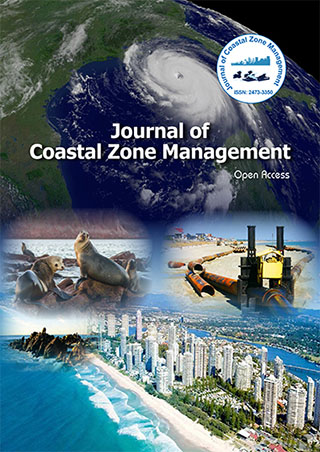Indexed In
- SafetyLit
- RefSeek
- Hamdard University
- EBSCO A-Z
- OCLC- WorldCat
- Publons
Useful Links
Share This Page
Journal Flyer

Open Access Journals
- Agri and Aquaculture
- Biochemistry
- Bioinformatics & Systems Biology
- Business & Management
- Chemistry
- Clinical Sciences
- Engineering
- Food & Nutrition
- General Science
- Genetics & Molecular Biology
- Immunology & Microbiology
- Medical Sciences
- Neuroscience & Psychology
- Nursing & Health Care
- Pharmaceutical Sciences
Restoring degraded lands using mangroves: Synergies between mangroves, climate change and sustainable development goals in Myanmar
3rd International Conference on Coastal Zones and Oceanography
May 18-19, 2018 Singapore
Vanniarachchy Suraj Anuradha and Fjortoft Arne
Worldview International Foundation, Myanmar
Scientific Tracks Abstracts: J Coast Zone Manag
Abstract:
Myanmar is ranked globally, as the second most vulnerable country in the world to extreme weather events over the last 20 years. The country has a coastline exceeding 2,832 km and approximately 785,000 ha of mangrove cover. Mangrove forests comprise 4% of Myanmar’s tree stock, are being destroying at an alarming rate. This research was done in the Thor Heyerdahl Climate Park, a 1,800-acre climate park located in Ayeyarwady Region of Myanmar. Objective of the research was to identify the synergies between mangrove restoration and UN sustainable development goals. It was found that 16 of the 17 SDGs are addressed through a sustainably managed mangrove restoration. It also sequestrated significant amount of carbon. These mangroves in Myanmar can store up to 732 tons of carbon per hectare. Unless the 785,000 ha of mangroves are placed under a protected scheme, over 500 million tons of carbon would release alone from the soil carbon to the atmosphere thus contributing towards global warming. Furthermore this analysis found that replanting 2000 hectares of mangroves would sequestrate over 5.5 million tons of carbon dioxide over a 20 year period. The calculations were based on actual field measurements and IPCC and UNFCCC approved methodologies. Mangroves act as a Green Wall, a Green Foundation, a Green Filter and a Green Habitat and each of this provides immense service against vulnerabilities. Green Wall protects against cyclones, winds and typhoons. Green Foundation protects shorelines from erosion and improves landscape resilience. The Green Filter reduces the saline content of coastal water and lowers damage from salt water intrusion. The Green Habitat provides breeding grounds and sanctuary for rich biodiversity. Therefore it can be concluded that mangroves provide a cost effective yet productive method of climate change mitigation and adaptation.
Biography :
Vanniarachchy Suraj Anuradha has over 10 years of experience in international carbon project development and research in the South and Southeast Asian region. He has been involved with research projects related to climate change mitigation and adaptation. He is also involved in the preparation of the Third National Communication (TNC) of Sri Lanka to the UNFCCC. He has worked on blue carbon projects in Myanmar for Worldview International Foundation and has conducted research with academics from the University of Pathein (Myanmar) on blue carbon.
Email:anuradhavan@gmail.com
